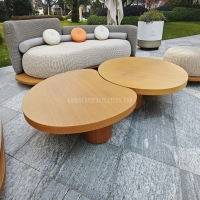Welcome to the website for landscape facilities products and knowledge.
How does the table’s design account for varying user preferences in tabletop reflectivity?
Table design has evolved significantly to address the diverse and often conflicting user preferences regarding tabletop reflectivity. While some users prefer a high-gloss, mirror-like finish for its luxurious aesthetic and ability to brighten a space, others find such surfaces problematic due to glare, which can cause eye strain and interfere with tasks like reading or working on a laptop. To reconcile these differing needs, designers employ a multi-faceted approach.
A primary strategy is the use of materials with varying inherent reflective properties. For high-reflectivity preferences, designers select polished materials like lacquered wood, high-gloss laminates, or tempered glass. These surfaces create a sense of depth and modernity. Conversely, for users who prioritize comfort and minimal glare, materials with a matte or satin finish are chosen. This includes woods with an oiled finish, textured laminates, stone with a honed rather than polished surface, and composites. These materials diffuse light, drastically reducing reflections and creating a softer, more relaxed ambiance.
Beyond material selection, innovative coating technologies play a crucial role. Advanced anti-reflective (AR) and anti-glare coatings can be applied to even inherently glossy materials, such as glass. These microscopic, etched layers help to scatter incident light, thereby preserving the material's clarity and color while mitigating harsh reflections. This allows for a compromise, offering the visual appeal of a shiny surface without the associated functional drawbacks.
Furthermore, intelligent design incorporates the control of the surrounding environment. Designers often consider the table's placement in relation to light sources. Strategic positioning away from direct overhead lighting or large windows can naturally minimize glare issues. The integration of adjustable or diffused lighting solutions in the room's overall design is another method to manage reflectivity passively.
Ultimately, accounting for varying user preferences in tabletop reflectivity is not about a one-size-fits-all solution. It is a sophisticated process of material science, surface engineering, and contextual design. By offering a spectrum of finishes and employing technologies that temper reflectivity, modern table design successfully caters to individual comfort, aesthetic taste, and the functional demands of the space, ensuring the table is both a beautiful and practical centerpiece.
Related search:

Recommendation
Elliptical metal outdoor table with nested design, resembling wood grain, round table